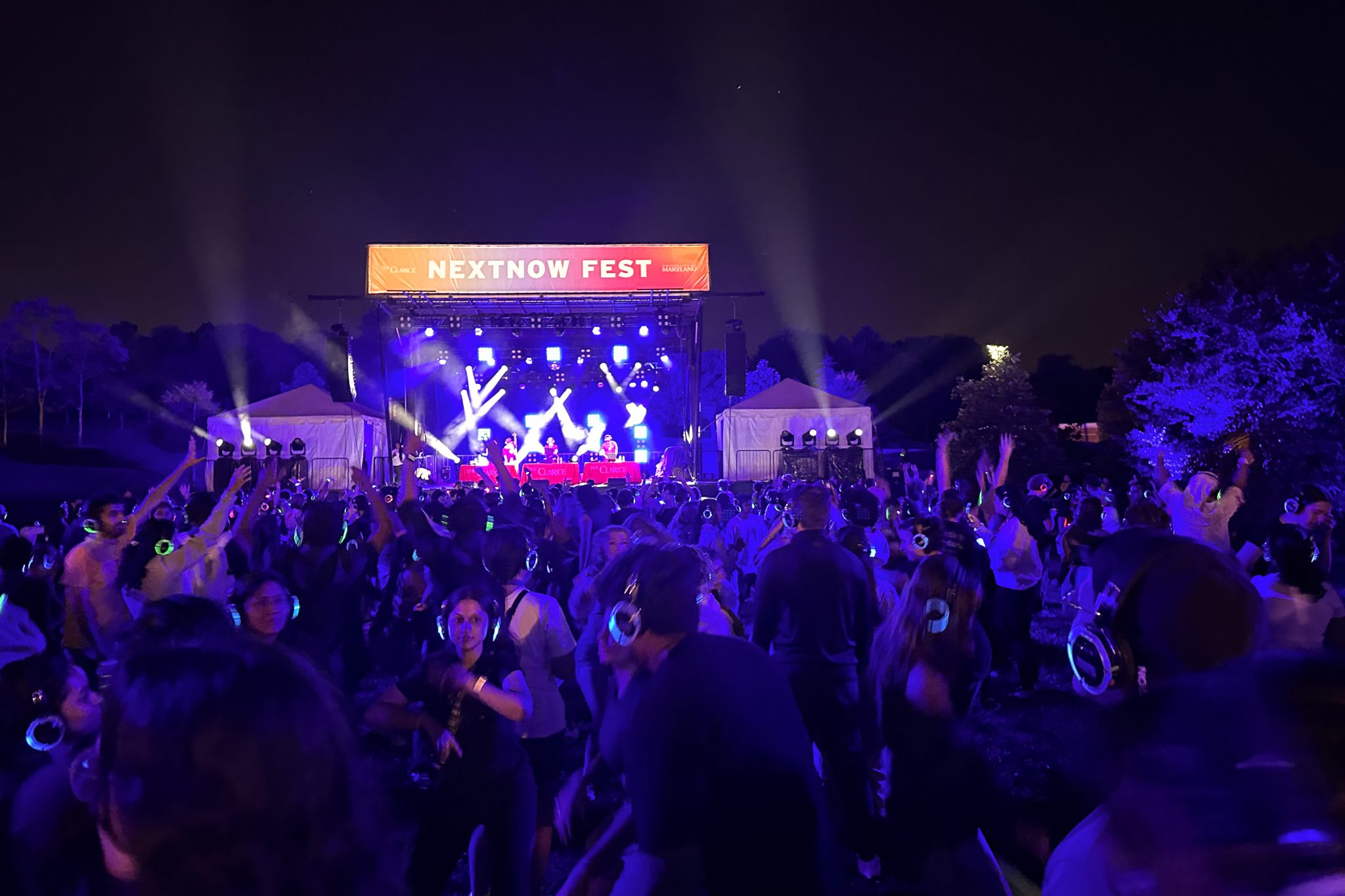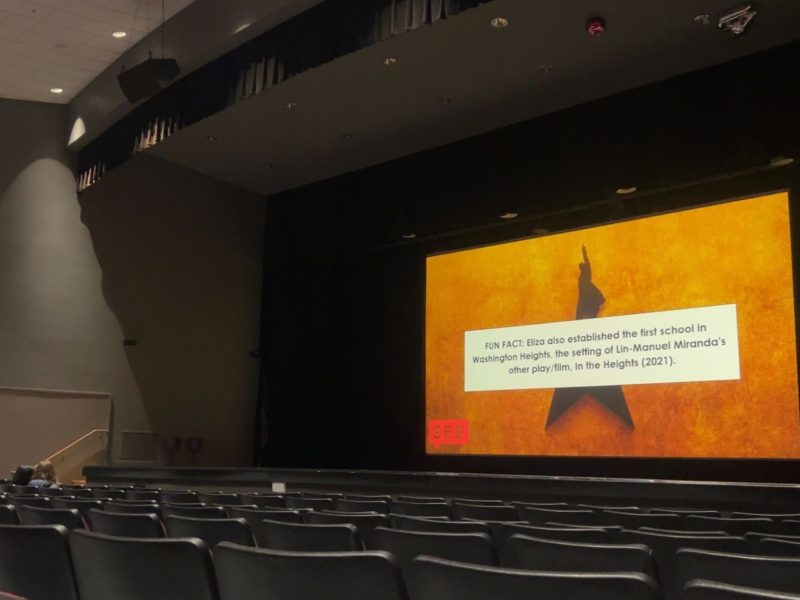Before Thursday, I wondered why anyone would attend a disco if it’s silent.
To set the record straight, the Silent Disc-Glo hosted by Student Entertainment Events and The Clarice Smith Performing Arts Center wasn’t quiet. Instead, students received headsets connected to a DJ booth, which allowed them to sing out loud and dance — all in what appeared to be silence. Many students also wore glow in the dark bracelets at the event, one of many at the University of Maryland’s NextNOW Fest, which ran until Sept. 10.
Even with headphones and a large crowd, the Disc-Glo created a vibrant, unique experience separate from a regular disco. It just goes to show you can have fun without speakers blasting.
“I wasn’t going to come at first, but I’m glad I did,” freshman cell biology and genetics major Kalyn Tolson said. “I think [a silent disc-glo] is better because it’s quiet. You look at everybody, like, ‘What are you listening to?’ Because now I want to hear.”
Three DJs were on stage at Thursday night’s Disc-Glo and attendees could flip through channels that were each linked to a mix with a button on the side of their light-up headphones. The DJs were assigned either green, blue or red, and whenever you switched to a new channel, the headphones matched their color.
[‘Beetlejuice Beetlejuice’ delivers familiar gags, falls into character cliches]
I first learned of the silent disco concept from the Netflix show Atypical. In it, a student organizes a silent dance at school to ensure her crush — and the main character, who has autism — can attend without becoming overstimulated.
A silent disco or dance could be a great fit if you find large crowds or loud noises overwhelming, according to Maia Swisdak, a freshman linguistics major. Forgetting earplugs to another concert or disco leaves Swisdak too preoccupied with the noise, Swisdak added.
Students paid close attention to how others reacted to their current channel and would press their buttons to join in on the fun. Swisdak noticed a rivalry among the DJs in trying to get more listeners on their channels.
“I really love that it’s especially hype because all three DJs are competing with each other, which I think makes the music better,” Swisdak said. “[If] one DJ’s music isn’t good, you can just switch the channel. And I really like [that] there’s no noise pollution to other people who might be on campus as well.”
The multiple DJs allowed for a more inclusive environment. From Keyshia Cole’s “Love,” to Miley Cyrus’ “Party in the USA,” and Rednex’s “Cotton Eye Joe,” students with varying music tastes could enjoy the fun. I thoroughly enjoyed myself when one of the DJs played some merengue and bachata, and when Chappell Roan’s “HOT TO GO!” came on.
[Elizabeth Gillies talks ‘Victorious,’ fame and what’s next at SEE Lecture]
For Simon Bailey, a freshman secondary education and English major, the Silent Disc-Glo created a welcoming environment that allows attendees to easily connect with music.
“If you go to a concert, it’s loud. Everyone’s singing, but with the silent disco, you’re just there dancing on your own, just around a bunch of other people, and it’s like a community,” Bailey said. “It makes it a little easier for everyone to have fun, I think, and that’s ideal, in my opinion.”



